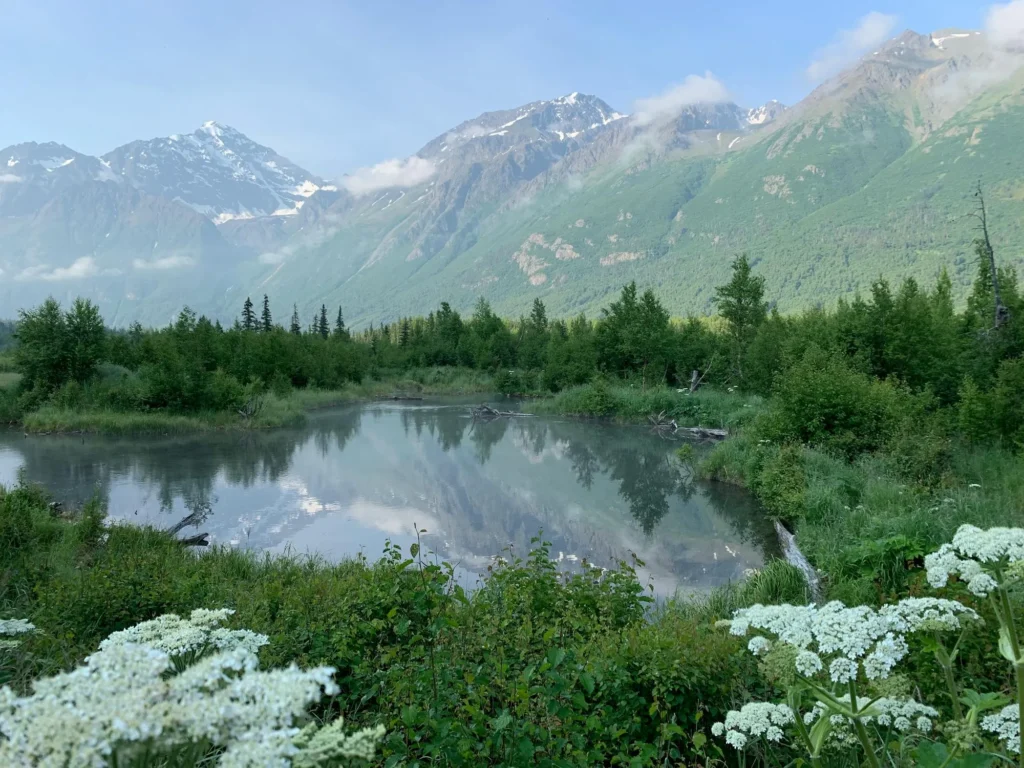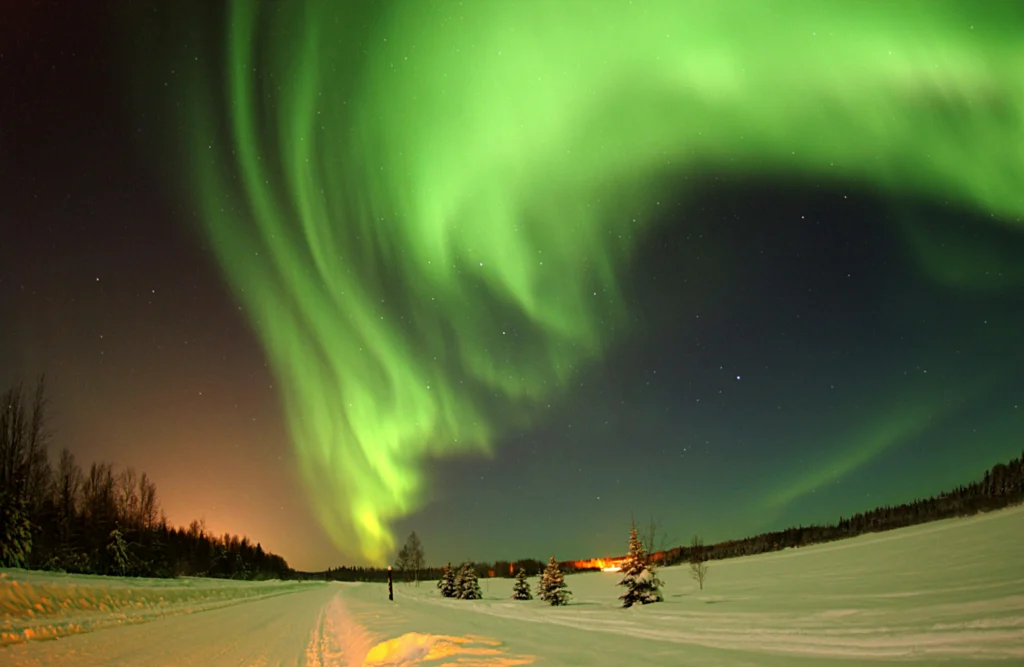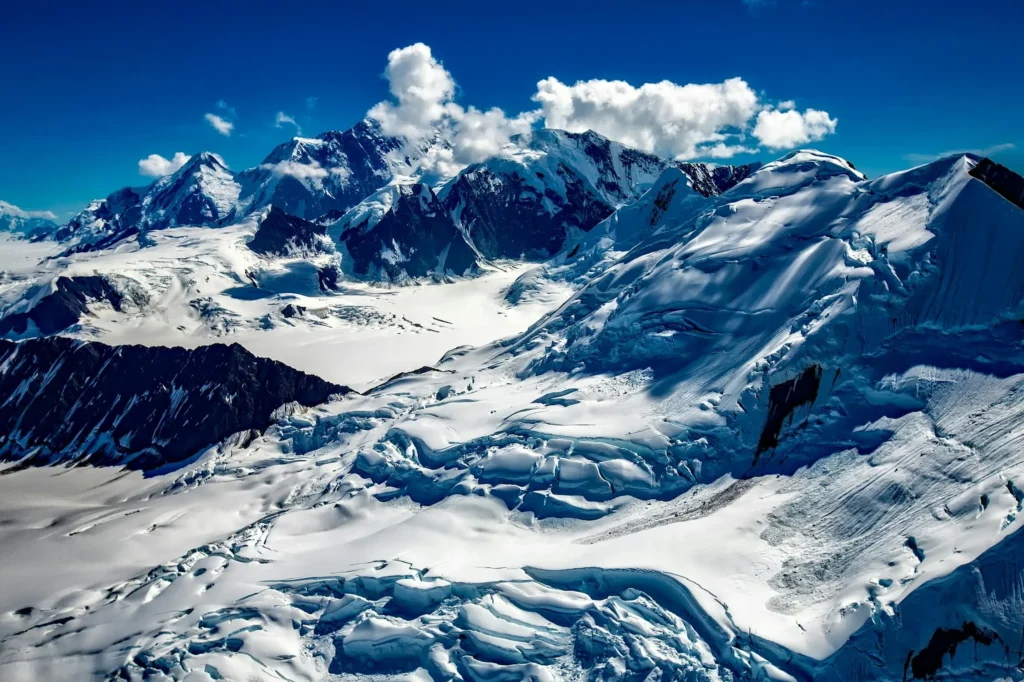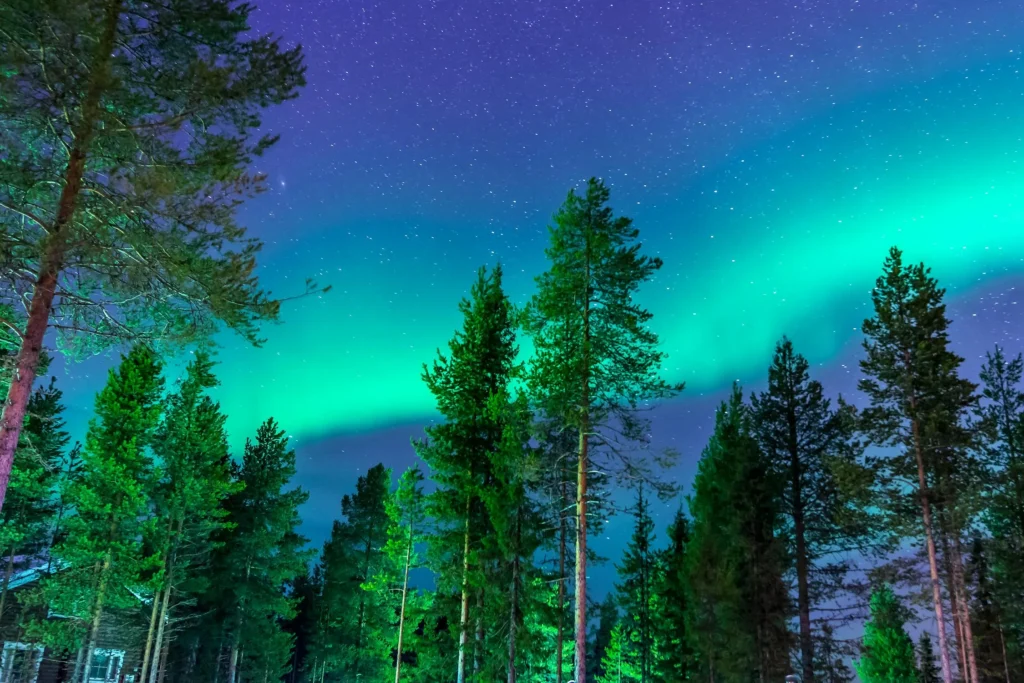Introduction to Visiting Alaska in 2025
Alaska, the largest state in the United States, is a dream destination for nature lovers, adventure seekers, and anyone looking to experience one of the last great wildernesses on Earth. Its unique landscapes range from towering mountain ranges and expansive glaciers to deep fjords and tundra. Alaska is home to a vast array of wildlife, including bears, moose, whales, and eagles, making it a haven for animal enthusiasts and photographers. Whether you’re looking for rugged outdoor experiences, cultural adventures, or just to witness the Northern Lights, Alaska offers something for every traveler.
As you plan your visit, one key factor to consider is the best time to visit Alaska in 2024. The timing of your trip can greatly impact your experience, as Alaska’s weather and seasonal changes offer distinct advantages depending on when you go. Let’s explore the seasons and how they shape the best time to visit this incredible state.
Why Timing Matters: Exploring Alaska’s Seasons

The right time to visit Alaska can drastically affect the activities available to you, the weather you’ll experience, and even the number of tourists. Alaska’s seasonal variations are extreme, with some areas experiencing 24 hours of daylight in the summer and long, dark winters. These fluctuations mean that certain activities, such as hiking and wildlife viewing, are best enjoyed in the summer months, while winter offers a completely different set of experiences like skiing and seeing the Northern Lights.
Whether you’re seeking the bustling summer season filled with outdoor adventures or the peaceful, serene winter for snow activities and unique sightings, understanding the differences between these seasons will help you decide when to visit.
Best Time to Visit Alaska: Summer vs Winter
Summer in Alaska (June-August)
The summer months in Alaska, from June to August, are the most popular times to visit. The weather is at its warmest, with temperatures ranging from 50°F to 70°F in most regions, making it perfect for outdoor activities like hiking, kayaking, and wildlife viewing. During these months, the sun never sets in the northern parts of Alaska, offering the famous “midnight sun” and long days to explore.
Summer is ideal for visiting iconic destinations like Denali National Park, where you can hike, take a scenic drive, and spot wildlife like grizzly bears, moose, and caribou. Anchorage, the largest city in Alaska, is another popular summer destination, offering a mix of urban amenities and easy access to natural wonders. The warmer weather allows for boat tours, fishing trips, and other water-based activities, making it the perfect season for families, solo travelers, and adventure seekers alike.
Winter in Alaska (November-February)
For those who crave a completely different experience, visiting Alaska in winter (November to February) is an unforgettable journey. While the temperatures are cold, ranging from -20°F to 20°F, winter offers a magical, serene atmosphere with far fewer tourists. This is the perfect season for winter sports enthusiasts who enjoy skiing, snowboarding, snowshoeing, or dog sledding across the snowy Alaskan wilderness. Best Time to Visit Alaska
Winter is also the best time to witness the Northern Lights, a mesmerizing natural light display that can be seen in the Alaskan skies between September and April, but especially in the winter months. Fairbanks and the area around the Arctic Circle are prime locations for aurora viewing. In addition to the Northern Lights, wintertime in Alaska also provides opportunities for quiet exploration, ice fishing, and even visiting frozen glaciers.
No matter the season, Alaska offers a wealth of experiences that cater to every type of traveler. By choosing the best time for your interests, you’ll be able to fully immerse yourself in the state’s natural beauty, culture, and adventure.
When to Experience Alaska’s Wildlife and Nature
Wildlife Viewing Seasons

Alaska is renowned for its rich wildlife, and the best time to view animals in their natural habitats depends on the season.
Spring and Summer (May-August) are ideal for spotting a wide range of wildlife, including bears, whales, and seals. As the weather warms up and wildlife becomes more active, you’ll have the best chance to witness bear cubs emerging from hibernation and salmon swimming upstream. During the summer months, Denali National Park is a prime spot for spotting grizzly bears, moose, and caribou, while Kenai Fjords National Park offers opportunities to see sea otters, harbor seals, and sea lions. Fairbanks is another great destination for wildlife, especially during the summer months when you can see a variety of birds and larger mammals, like the moose and bears, in the surrounding wilderness. Best Time to Visit Alaska
Additionally, the salmon runs in late summer are a spectacular natural phenomenon, with millions of salmon swimming up Alaska’s rivers, creating a feeding frenzy for bears and other predators. This is a prime time to visit if you’re keen on experiencing the raw beauty of nature at its most dynamic. Whale watching is another incredible experience, with the summer months bringing migrating whales into Alaska’s waters, particularly along the Inside Passage and near Ketchikan and Juneau.
Glacier Viewing and Ice Hiking
Summer (May-August) is also the best time for exploring Alaska’s glaciers, as the warmer temperatures make glacier tours more accessible. Glacier Bay National Park is one of the best locations for glacier viewing, where visitors can take boat tours to get close to these towering ice formations. Many glaciers, like Mendenhall Glacier near Juneau, offer accessible hiking trails that lead directly to the glacier, providing an unforgettable experience.
For a more immersive experience, consider taking glacier hikes or kayaking trips to explore ice caves and get up close to the blue-tinted ice. Ice climbing is also a popular activity for adventurous travelers, particularly in areas like Wrangell-St. Elias National Park. These summer months offer the best chance to see glaciers in full glory, as well as to engage in activities that bring you closer to Alaska’s frozen landscapes.
The Best Time for Cruises to Alaska
Alaska Cruise Seasons
The peak cruise season to Alaska runs from May to September, with the months of June, July, and August being the most popular. During this period, the weather is generally milder, with temperatures ranging from 50°F to 70°F, which makes for a comfortable journey. The summer months also offer the longest daylight hours, meaning more time to enjoy the stunning scenery.
Cruise lines offer a range of options, from multi-day trips along the Inside Passage to voyages to Glacier Bay National Park. This is the best time to book a cruise if you want to experience the beauty of Alaska’s pristine waters, massive glaciers, and charming coastal towns. A cruise during this time provides an opportunity to visit iconic Alaskan destinations like Juneau, Ketchikan, and Skagway, as well as enjoy activities like whale watching, hiking, and sightseeing in port towns.
Things to See on an Alaska Cruise
A cruise through Alaska provides unparalleled access to the state’s natural wonders, including scenic fjords, towering glaciers, and abundant wildlife. Passengers can explore glacier fields, like those in Glacier Bay, or venture into more remote areas such as Kenai Fjords and Icy Strait. These areas are often home to glaciers calving into the sea, making for an awe-inspiring sight. Cruises also provide excellent opportunities for whale watching, where you can spot humpback, orca, and gray whales migrating through Alaska’s waters.

For those visiting in late summer or early fall, a cruise could also provide a chance to witness the Northern Lights, although this is more commonly seen in winter months. Many cruise ships offer late-season departures in September that allow passengers to experience the colorful fall landscapes, fewer crowds, and a chance to see the aurora borealis.
Whether you’re interested in viewing wildlife, exploring glaciers, or cruising through fjords, timing your visit to Alaska according to its seasons can maximize your experience. Summer offers a wide range of activities and mild weather, making it the best time for most travelers, while winter offers a peaceful, unique atmosphere for those seeking adventure in the snow and ice.
Ideal Time for Adventure and Outdoor Activities
Hiking and Trekking in Alaska
Alaska is a paradise for outdoor enthusiasts, with countless trails that lead through breathtaking landscapes. The best time for hiking and trekking in Alaska is typically during the summer months (June to August) when the weather is mild, and the trails are accessible. For those looking to challenge themselves, hiking Denali National Park is a must. June through early September offers the best conditions for trekking in the park, where you can explore rugged terrain, vast tundras, and stunning mountain vistas.
Another great option is the Iditarod Trail, which offers both winter and summer experiences. In the summer, hikers can traverse parts of the trail, enjoying the serene wilderness and wildlife sightings. For winter enthusiasts, hiking the Iditarod Trail in the colder months offers the thrill of following the famous sled dog race route, surrounded by snow-covered landscapes and the possibility of experiencing the magical Northern Lights.
Safety tips for hiking in Alaska include ensuring you’re prepared for rapidly changing weather, having sufficient gear like a good pair of boots, layered clothing, and plenty of water. Some trails are quite remote, so make sure to have navigation tools and let someone know your route. Popular trails like the Kesugi Ridge in Denali or the Flattop Mountain in Anchorage are well-maintained and offer stunning views, but they still require preparation for navigating Alaska’s wilderness.
Northern Lights Viewing
If you’re looking to experience the Northern Lights, the best time to visit Alaska is between September and March, with peak viewing months being December to February. This is when the dark winter skies are clear, and the conditions are ideal for witnessing the Aurora Borealis in all its colorful glory. Fairbanks, located directly beneath the Aurora Oval, is one of the best places in the world to view the Northern Lights. Many travelers also head to the Arctic Circle for the chance to see this spectacular light show in a more remote, unspoiled environment.
While the winter months offer the clearest skies and the best chance of seeing the aurora, it’s important to plan for extremely cold temperatures. Keep an eye on space weather predictions for solar activity, as this will determine the intensity of the Northern Lights. Chena Hot Springs, just outside of Fairbanks, is a popular spot for combining Northern Lights viewing with relaxing in natural hot springs.
Other Considerations for Your Alaska Trip in 2025
Weather and Clothing Tips

Alaska’s weather can be unpredictable, and it’s essential to pack appropriately for the conditions you’ll face. During the summer months, you can expect temperatures ranging from 50°F to 70°F (10°C to 21°C), especially in coastal and lower elevation areas. Layering is key to adapting to changes in weather, and you should bring light, moisture-wicking clothes, a waterproof jacket, and sturdy hiking boots. For colder months, particularly if you’re planning to visit in winter (November to March), you’ll need heavy winter clothing, including insulated jackets, thermal layers, gloves, hats, and boots to keep warm in temperatures that can drop to -20°F (-29°C) or lower. Be sure to also pack sunglasses and sunscreen, as even in winter, the snow can reflect a lot of sunlight, leading to potential snow blindness.
Tourism Trends in 2025
In 2024, Alaska’s tourism industry is focusing on sustainability and eco-friendly practices. Many travelers are increasingly looking for ways to enjoy the state’s natural beauty while minimizing their environmental impact. New initiatives include carbon-offset programs for flights and tours, eco-conscious accommodations, and sustainable wildlife watching experiences. Alaska is also promoting local and indigenous cultural experiences, with more opportunities to engage with Native Alaskan communities and learn about their traditions and ways of life.
Cruise lines and tour companies are enhancing their eco-tourism options to ensure that the stunning landscapes and wildlife are preserved for future generations. If you’re planning to visit Alaska in 2024, consider choosing sustainable travel options that minimize your carbon footprint.
Festivals and Events
Alaska is home to several unique festivals and events that showcase its culture and spirit. In March, the Iditarod Trail Sled Dog Race kicks off in Anchorage, drawing thousands of visitors to witness one of the most thrilling and traditional events in Alaska. Whether you’re attending the ceremonial start in Anchorage or the official race in Nome, this event provides a glimpse into Alaska’s rugged, frontier lifestyle.
Another exciting event is the Fur Rendezvous (The Fur Rondy) festival, held every February in Anchorage. This winter festival includes events like ice sculpture competitions, snowshoe races, and dog sledding, all set against the stunning backdrop of snow-covered peaks. These events highlight the community spirit and love of outdoor adventure that Alaskans are known for.
Whether you’re planning a visit to Alaska for the Northern Lights, hiking adventures, or experiencing one of the state’s famed events, 2024 promises to be a year full of unforgettable experiences. Timing your visit based on the weather, wildlife, and cultural events will help you create the most memorable trip to this extraordinary destination.
Conclusion: When is the Best Time to Visit Alaska for You?
Alaska is a destination that offers something for everyone, from wildlife enthusiasts to adventure seekers, and from cruise lovers to those looking for a peaceful retreat in nature. The best time to visit depends largely on your interests and what experiences you’re hoping to have.
- For wildlife lovers, the summer months (June to August) are ideal for spotting bears, whales, and seals. If you want to witness the annual salmon runs or see migrating whales, plan your trip for early summer.
- For adventure enthusiasts, the summer months offer the best conditions for hiking and trekking, while winter (November to February) provides the opportunity to experience dog sledding, snowshoeing, and the Northern Lights.
- If you’re planning to take an Alaska cruise, the peak season is from May to September. During this time, you’ll have the chance to see glaciers, fjords, and vibrant coastal towns.
- For those seeking a quieter experience and fewer tourists, consider visiting in the off-season during the shoulder months (spring or fall). This will allow you to avoid crowds while still enjoying the majestic landscapes and wildlife in a more peaceful setting. Best Time to Visit Alaska
